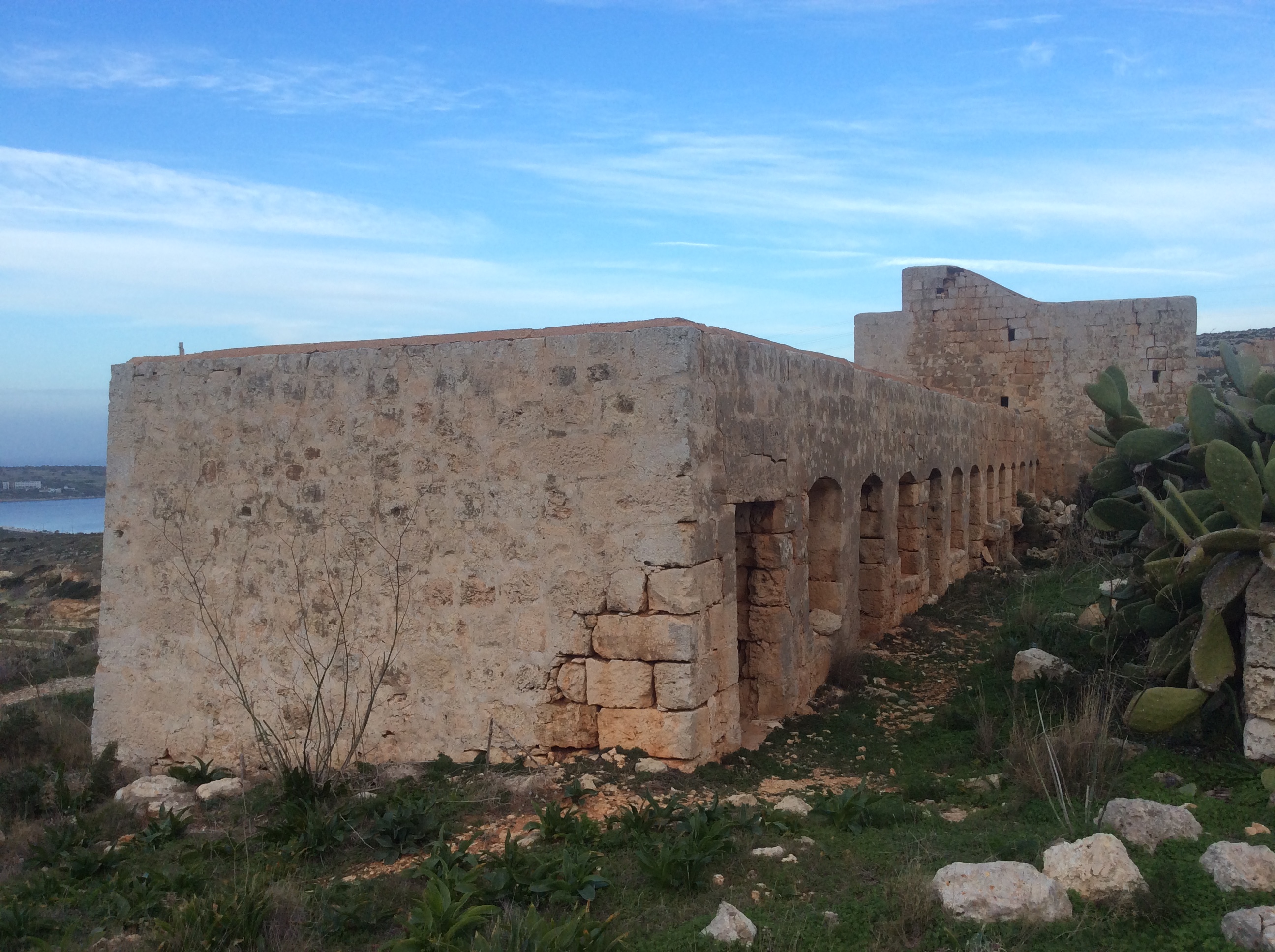The Devil’s Farmhouse - Malta’s Most Sinister Legend

In the tranquil, sun-drenched fields near Mellieħa, in the north of Malta, stands a structure known as Ir-Razzett tax-Xitan – ”The Devil’s Farmhouse.” Far from the bustling tourist centres, this 18th-century building, now in a dilapidated state, holds a dark and enduring reputation. It’s not just an abandoned farmhouse; it’s a place steeped in chilling folklore, believed by many to have been built by supernatural forces, and even to be haunted by them. For those drawn to local legends, the eerie beauty of derelict places, and the thrill of exploring locations with a truly sinister past, The Devil’s Farmhouse offers a captivating, albeit unsettling, journey into Malta’s mysterious heart.
A Building Forged by Fiends?
The most potent legend surrounding Ir-Razzett tax-Xitan claims that it was not built by human hands, but by the Devil (or devils) themselves, in an incredibly short span of time – some say just one night, others three days. This myth likely arose from the farmhouse’s unusual appearance and its isolated location, away from typical urban development.
Originally constructed in the 18th century during the rule of the Knights of Malta, the building was designed to be stables and a ’Cavalerizza’ (horse-riding school). Its architectural style is vernacular Maltese, simple and robust limestone. However, certain architectural features have fuelled the demonic connection: two enclosed staircases leading to the roof are said to resemble a pair of horns when viewed from a distance.
This striking visual, combined with its remote setting, cemented its unholy moniker in the local psyche. The very name, ”The Devil’s Farmhouse,” was possibly given intentionally to deter curious eyes and allow illicit meetings to take place in private, away from the prying eyes of the community.
Whispers of Diabolic Souls
Beyond its mysterious origins, Ir-Razzett tax-Xitan is steeped in tales of active haunting and malevolent presences. For generations, local Mellieħin (residents of Mellieħa) have whispered of unsettling occurrences within and around the farmhouse.
- Eerie Cries: It’s said that on nights of a full moon, the cries of diabolic souls can be heard echoing from within the spacious structure, a chilling testament to the restless spirits believed to inhabit the place.
- Oppressive Atmosphere: Visitors often report a profound sense of unease, dread, or being watched when exploring the ruins. The air within the decaying walls is described as heavy, almost suffocating, leaving a lasting impression on those who dare to enter.
- Paranormal Activity: While specific instances of visual apparitions are less common, reports of disembodied whispers, sudden cold spots, and unexplained noises contribute to the farmhouse’s reputation as a hotbed of paranormal activity. The collective sorrow, fear, or malevolence imprinted on the building over centuries is said to be palpable.
These chilling accounts contribute to why the farmhouse has been left abandoned and fallen into its current dilapidated state. Despite its architectural significance (it’s a scheduled Grade 1 National Monument, meaning it’s protected from demolition), its formidable reputation has arguably deterred full restoration efforts for many years, leaving it to the mercy of time and lingering spirits.
Exorcism and Enduring Shadows
Some local legends offer a glimmer of hope amidst the darkness. One tale suggests that a courageous priest from the nearby Sanctuary of Our Lady of Mellieħa eventually performed an exorcism at the farmhouse. It is believed that, after this ritual, the most malevolent spirits were banished, and the intense, demonic presence subsided.
However, even if the exorcism provided some relief, the stories and the chilling atmosphere persist. The farmhouses’ long history, its isolation, and the sheer power of the collective belief in its diabolical past ensure that Ir-Razzett tax-Xitan remains one of Malta’s most compelling and unsettling historical sites. It’s a place where the line between myth and reality becomes profoundly blurred, inviting you to wonder what truths lie beneath the legends.
Visiting Malta's Devilish Landmark
For those eager to experience the eerie allure of Ir-Razzett tax-Xitan, a visit offers a unique exploration of Maltese folklore and a tangible connection to a truly mysterious location.
- Location: Ir-Razzett tax-Xitan is located in the Ta’ Randa area of Mellieħa, Malta. It stands in relative isolation, away from the main developed areas.
- Getting There: It is best accessed by car, as it’s off the main public transport routes. You can find it by searching for ”The Devil’s Farmhouse” or ”Ir-Razzett tax-Xitan” on GPS. It’s often described as being close to Popeye’s Village, making it a potential side trip.
- Safety and Respect: The farmhouse is in a dilapidated state with collapsed sections of the roof and decaying features. Exercise extreme caution if you choose to explore its interior, as it is unstable and potentially dangerous. The building is a national monument, so treat it with respect. It is not officially open to the public for tours, but can be viewed from the outside.
- Best Time to Visit: While its isolation makes it atmospheric at any time, visiting during daylight hours is safest given its condition. For those seeking a deeper chill, consider visiting during twilight, but always prioritize safety.
- Combine with Local Exploration: After your visit, explore Mellieħa itself, with its beautiful beach, the iconic Sanctuary of Our Lady of Mellieħa (from where the exorcist priest is said to have hailed), and its charming village atmosphere, offering a contrast to the farmhouse’s dark aura.
The Devil’s Farmhouse is a powerful testament to the enduring nature of local folklore and the deep-seated fears that shape a community’s understanding of its landscape. For the adventurous traveller, it offers a chilling glimpse into a unique Maltese mystery that continues to haunt the very ground it stands upon.
